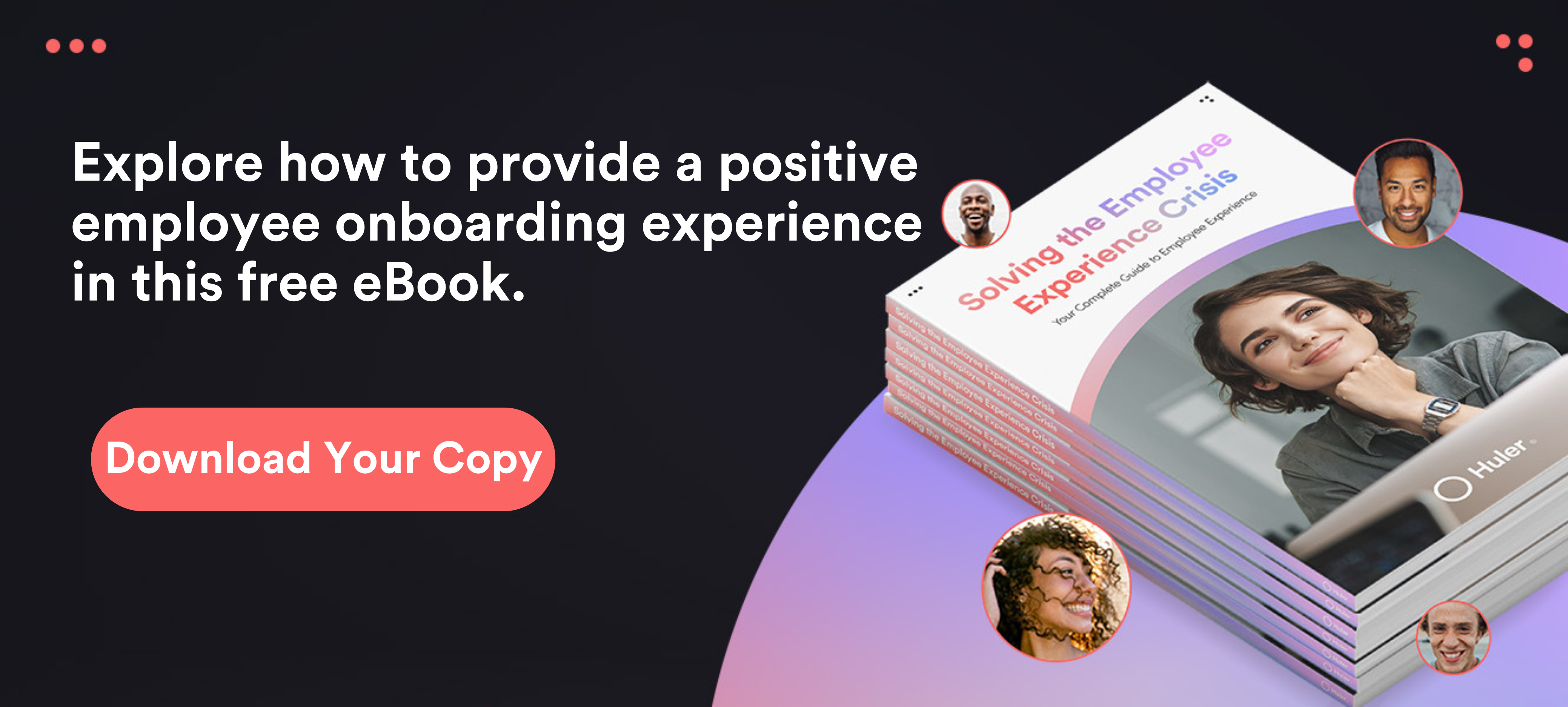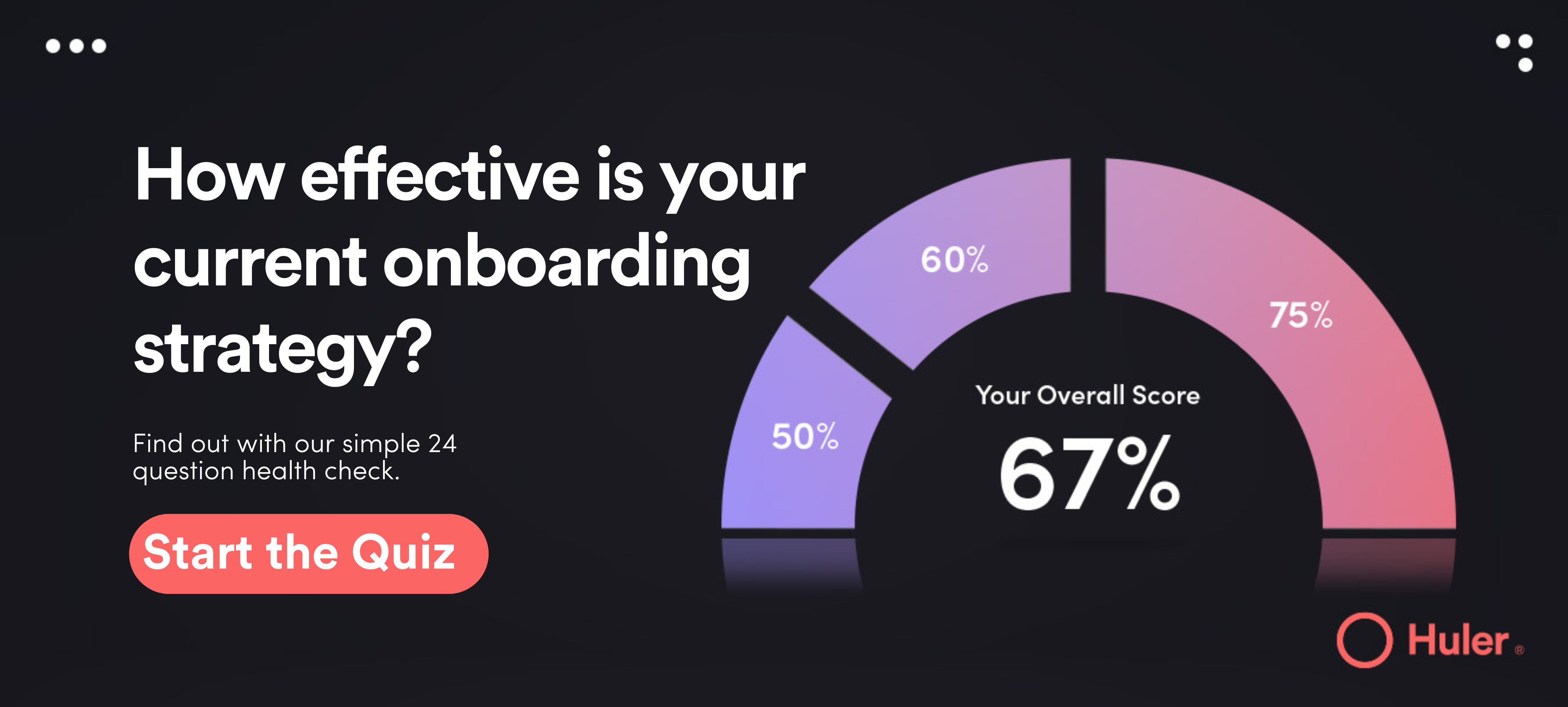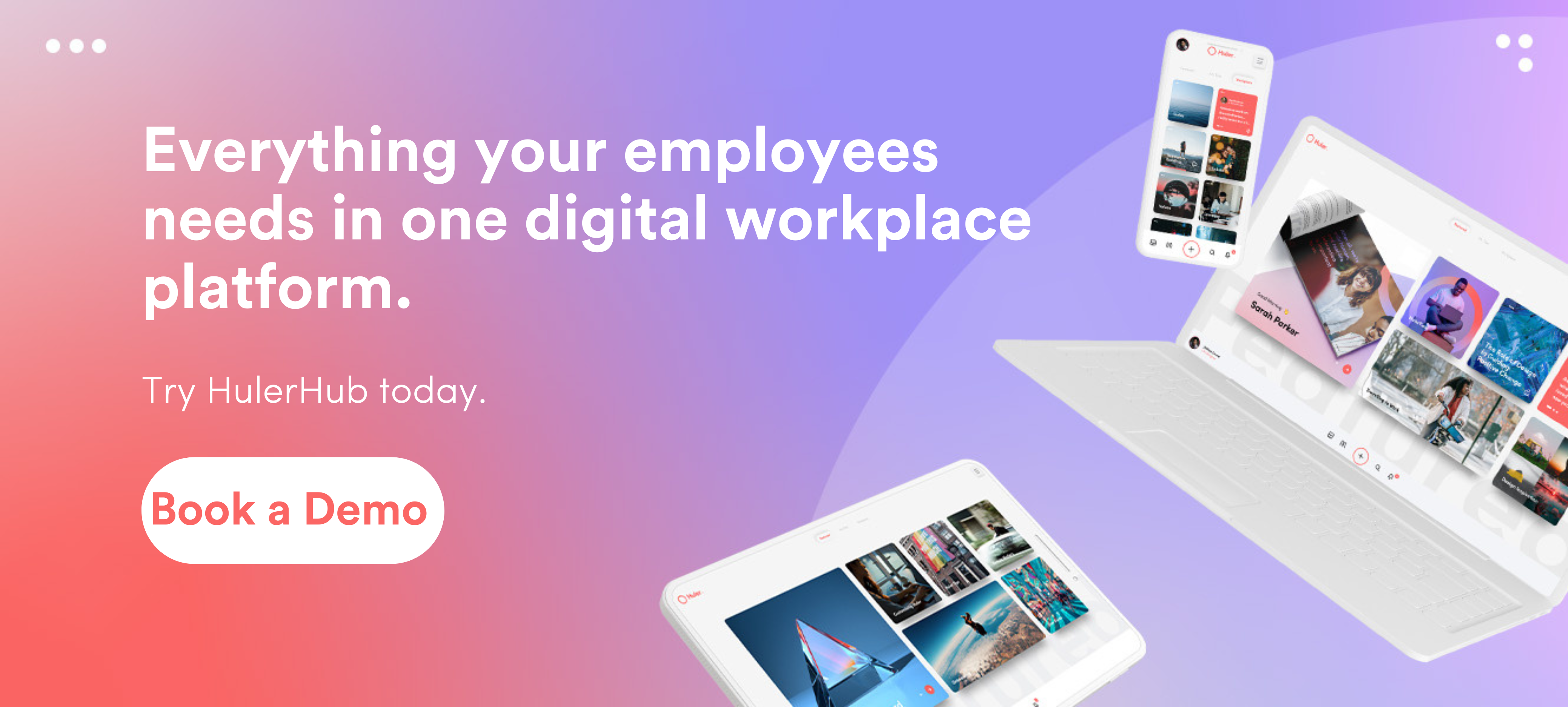Your onboarding process plays a huge role for both your new hires and your organisation as a whole. For your new starters, this is when they get to experience your company culture firsthand, see how they would fit within the team and learn what’s expected of them. For existing employees, a streamlined onboarding process reduces the stress and work associated with integrating new starters. For your organisation, this is a prime opportunity to win the hearts and minds of new employees, and make an impression that stays with them for the duration of their careers.
In today’s hybrid or remote work environments, it can be even harder to get onboarding right. You need to think about how to integrate remote starters into the wider team and how to provide access to resources. For example, can you provide them with information before their company email is set up? The last thing you want is to overwhelm new starters with endless and abstract documentation about their technology stack and workflows.
Onboarding shouldn’t be just a checklist of tasks to complete – it should have a human touch, too. This can help ease new starters’ nervousness, stop them feeling overwhelmed, and help them feel confident in their new role. Long-term, it can support good relationships with colleagues and increase retention.
Central to successful onboarding in 2023 and beyond is curating a digital workplace that makes the process of getting started easy, and introduces continuity between in-office, remote and hybrid new starters. A great employee onboarding process can increase employee retention by 82%.1 On the other hand, a bad onboarding experience can convince new hires to quit at an alarming rate, with 31% of them leaving within the first six months.2 So, it’s important to take planning seriously. Let’s get started.
Suggested reading: If you want to learn more about how the workplace has changed, check out our new eBook — Solving the Employee Experience Crisis.
Step 1: Make accessing information straightforward
Information-sharing within onboarding should be as straightforward as possible. Your HR professionals and team leaders bring your new hires up to speed on how things are done in your organisation. This means sharing a lot of training materials — video tutorials, documentation, articles, links, and other resources in your knowledge base.
In a remote or hybrid environment, a large part of the onboarding process is focused on the technology stack. The new employee should know how to make the most out of the tools at their disposal, which means they have to master several apps in a short amount of time.
But here’s the thing. You want your employees to focus on learning about the job, not on where to find one resource or another, so you should make the information easily available.
Strategies to help
- Have an onboarding plan: Create an onboarding plan and share it with your new hire so they can move themselves forward through the process. This plan should include a list of tasks they should complete, as well as goals for each task.
- Make information sharing easy: You need the ability to create and share custom learning collections, making the information easy to access. Ideally, this should be done through an interface that is simple enough that team leaders and line managers can tailor the information they provide to new starters.
- Centralised app access: Your business probably depends on a few core applications that everyone uses, and each team will have their own additional apps. If you have the ability to create custom dashboards that will let people access the applications they need with a single click, you will remove ambiguity and streamline workflows long-term.
- Encourage collaboration: The onboarding process should not be an isolated experience. Your new employee should meet with their team members, department heads, cross-department employees they will work with, and managers, and ask any questions they may have.
Step 2: Focus on digital collaboration
Creating a collaborative onboarding experience helps your new hire to get answers fast and accelerates their training. In addition, a collaborative onboarding experience enables your staff to connect, get to know each other, and build a sense of camaraderie.
A group onboarding experience can break down the barriers between current and new employees, helping your new staff experience and embrace your company culture. Onboarding becomes an immersion program that enables your new hires to bond with their co-workers, improving their employee experience and increasing retention.3
In the context of remote and hybrid working, it’s important that as much of this as possible is facilitated within a digital workplace. You simply cannot rely on people talking to each other at their desks when not everyone is in the same room.
Strategies to help
- Schedule meet and greets: Schedule meet and greets early in the onboarding process. Make sure that your new employee gets to meet company leaders, top performers, and people working in positions they might aspire to in the future. These can be Zoom sessions, or face-to-face. This will help the new hires to learn more about the company and their role in it, and gives them access to people who can answer their questions.
- Implement mentoring programs: Only 29% of new hires feel prepared to excel in their new role.4 Mentoring can help new employees learn the ropes and may give them the confidence boost they need to become top performers. Mentors show new employees how to do their jobs and help them understand how they fit within a team. The transfer of knowledge accelerates the new hire’s journey to productivity.
- Make digital sharing simple: You need to make it as easy as possible for people to share information digitally. That includes file sharing, application sharing, screen sharing, and more. Again, digital tools that allow you to create custom displays and share resource collections are a big help here.
Pro Tip: Historically, intranets have been the predominant tool used to facilitate digital collaboration and access to information. However, updates to the modern intranet, including options like employee experience platforms, provide additional features within a cloud-based solution — and are well worth investigating.
Step 3: Define clear expectations and responsibilities
Humans get anxious when they don’t know what the future holds. You can reduce the anxiety your new employees feel by showing them what success looks like in your organisation.
Set short-term goals they can meet in a week, in a month, in three months, etc. Review their goals and offer feedback on what they did well and what they can improve.
Give your employees responsibilities from the start, but also enable them to think independently and achieve their goals however they see fit. This will keep them engaged and provide opportunities for continuous improvement.
Easy access to policies and procedures can also help employees quickly understand your organisation’s culture, rules and approach to work. This can help them hit the ground running within the expectations they’ve been given.
Strategies to help
- Create a 10-30-60-90-day plan: Create a plan detailing what’s expected of your new hires at each milestone. Then meet with them regularly to review their progress and answer possible questions.
- Run a small test project: Your new employees should understand their role and responsibilities. So it’s a great idea to run a small test project so the new hire and their team members can interact and see how projects are managed in your organisation.
- Schedule one-on-one meetings: You should schedule regular one-on-one meetings between the new employees and their direct managers. This enables managers to lay out their expectations and answer questions. It also helps build rapport and eases the new hire’s transition to a team member.
Step 4: Ask for feedback
A satisfying employee experience during onboarding increases retention.5 But you can’t build an efficient onboarding process without data, so you should ask your new employees for feedback in order to understand their experience.
Strategies to help
- Use pulse surveys: Pulse surveys are brief sets of questions that can help you get insights into employee satisfaction, work environment, team relationships, and so on.
- Use open-ended questions: Open-ended questions give your new employees the chance to answer whatever they like. You can analyse the answers to open-ended questions and discover qualitative trends or improvement opportunities that are unique to your employees’ needs.
- Speak with new hires and managers: Make sure that your review process includes both new hires. However, HR professionals should also consult with the new hire’s manager and team members to identify areas the new employee is struggling with and how you can better support them with onboarding.
Additional resources: Self-reflection and feedback need to be an ongoing process that covers all areas of your organisation. We’ve put together an Employee Experience Health Check to help your HR team do just that.
Step 5: Build a repeatable experience
If you want to make sure that all your new hires benefit from a great onboarding experience, it’s important to standardise the process. Onboarding templates provide a good starting structure and speed up the universal aspect of the process — going over the paperwork and introducing new hires to your company’s culture, tools, and processes.
Strategies to help
- Simplify communication: You should make it easy for your team members to communicate and collaborate with your new hire. Company-wide notifications can help standardise updates and keep everyone on the same page, so use those to your advantage. Moreover, you need to make it easy for users to find the communication tools they need to get the job done.
- Make your plan accessible: Make sure all relevant managers in your organisation have access to the onboarding processes and documentation you’ve put together, otherwise your hard work will go to waste. Again, the simplicity of sharing information and accessing information within your digital workplace has a large impact on how easily and intuitively this can occur.
- Leave room for personalisation: Using onboarding templates helps you streamline the process, but you should make sure that you leave room for personalisation. It’s a good idea to have a process that’s 80% templated and 20% tailored to the role and individual. Digital tools that enable you to customise what employees see and how they interact with applications, files and resources help you do this simply and easily.
Pro tip: Providing a human touch, such as a handwritten note or a small personalised gift, can mean just as much to a new starter as a streamlined set up.
Onboarding should be simple, and that starts with planning
You need to think deliberately about onboarding, and hybrid working makes this more important than ever. It’s no longer possible to rely on informal in-office chats to integrate new starters into the team. What you need is technology that’s able to deliver a digital workplace experience that can bridge the gap between in-office and remote workers, create consistent experiences for both, and keep up with emerging workplace trends.
Luckily, the same investments that will help update your onboarding process will also improve collaboration and communication in the context of hybrid working, more generally. Doing both is something we set out to accomplish at Huler. HulerHub is an employee experience platform designed to transform the digital workplace with simple access to files, resources and applications — all within an intuitive interface that matches your brand. The platform enables you to create a standardised onboarding process that’s simple, doesn’t overload your new hires with information, and facilitates collaboration.
Book a free demo and see how easy it is to streamline and transform your onboarding process today.
1 10 Employee Onboarding Statistics you Must Know in 2022
2 What People Really Want from Onboarding
3 Why Workplace Collaboration is the Secret Sauce to Higher Retention and Better Business Outcomes
4 Designing the Employee Experience to Improve Workplace Culture and Drive Performance







